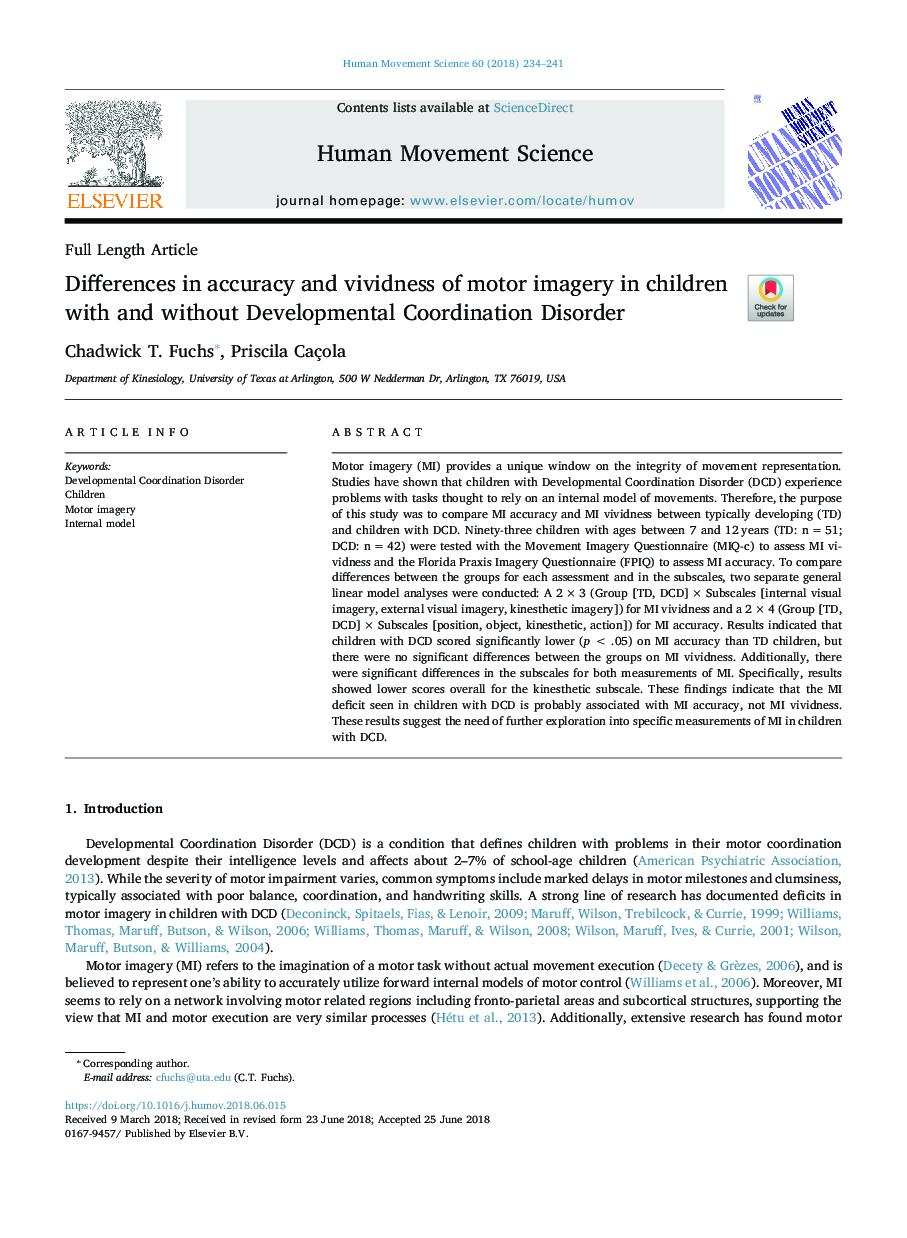| Article ID | Journal | Published Year | Pages | File Type |
|---|---|---|---|---|
| 7290894 | Human Movement Science | 2018 | 8 Pages |
Abstract
Motor imagery (MI) provides a unique window on the integrity of movement representation. Studies have shown that children with Developmental Coordination Disorder (DCD) experience problems with tasks thought to rely on an internal model of movements. Therefore, the purpose of this study was to compare MI accuracy and MI vividness between typically developing (TD) and children with DCD. Ninety-three children with ages between 7 and 12â¯years (TD: nâ¯=â¯51; DCD: nâ¯=â¯42) were tested with the Movement Imagery Questionnaire (MIQ-c) to assess MI vividness and the Florida Praxis Imagery Questionnaire (FPIQ) to assess MI accuracy. To compare differences between the groups for each assessment and in the subscales, two separate general linear model analyses were conducted: A 2â¯Ãâ¯3 (Group [TD, DCD]â¯Ãâ¯Subscales [internal visual imagery, external visual imagery, kinesthetic imagery]) for MI vividness and a 2â¯Ãâ¯4 (Group [TD, DCD]â¯Ãâ¯Subscales [position, object, kinesthetic, action]) for MI accuracy. Results indicated that children with DCD scored significantly lower (pâ¯<â¯.05) on MI accuracy than TD children, but there were no significant differences between the groups on MI vividness. Additionally, there were significant differences in the subscales for both measurements of MI. Specifically, results showed lower scores overall for the kinesthetic subscale. These findings indicate that the MI deficit seen in children with DCD is probably associated with MI accuracy, not MI vividness. These results suggest the need of further exploration into specific measurements of MI in children with DCD.
Related Topics
Life Sciences
Neuroscience
Cognitive Neuroscience
Authors
Chadwick T. Fuchs, Priscila Caçola,
